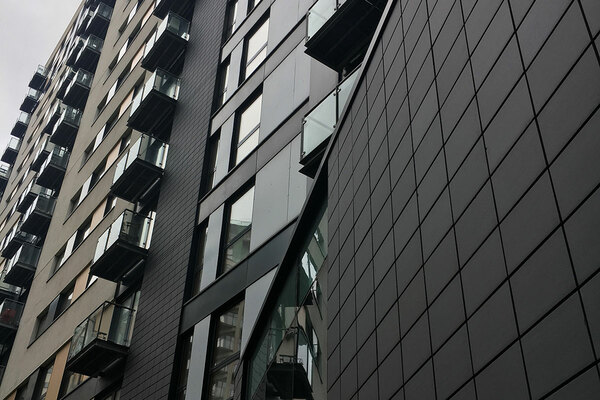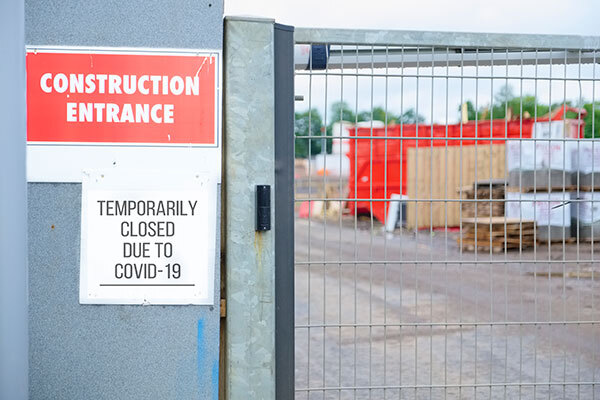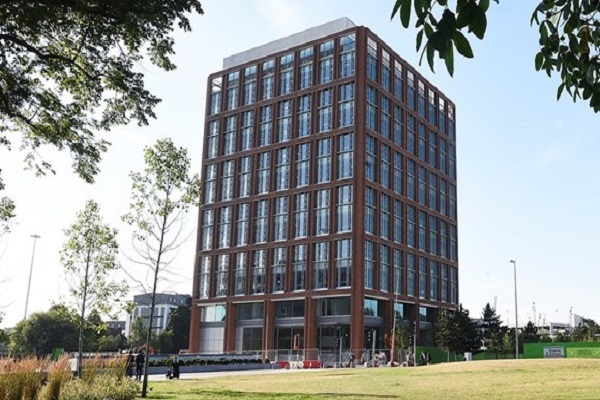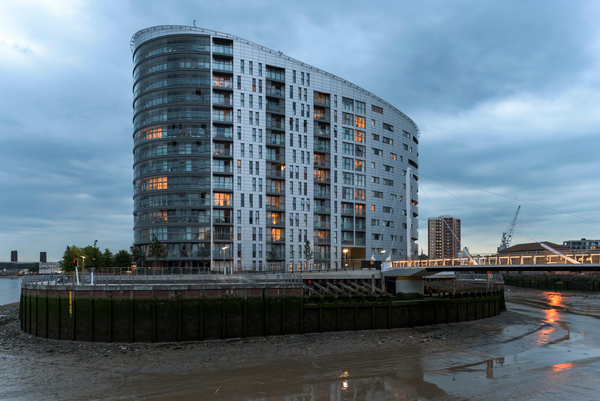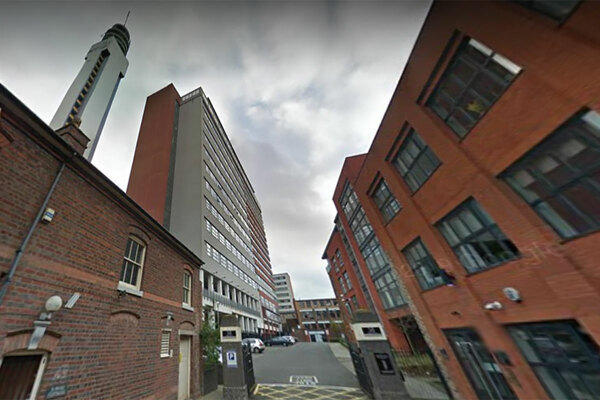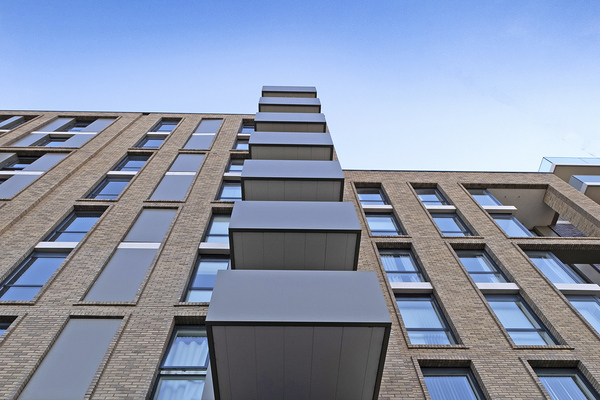You are viewing 1 of your 1 free articles
How the cladding scandal is affecting people on the government’s Help to Buy scheme
Thousands of leaseholders who bought their homes through the government’s Help to Buy scheme are embroiled in the cladding scandal. Jack Simpson takes an in-depth look at the relationship between the building safety crisis and Help to Buy, to understand why some homeowners feel they are more trapped by the scheme
When David Cameron launched the Help to Buy programme in 2013, he promised that it would get people on the property ladder and unlock the housing market.
In the eight years since, nearly 300,000 first-time buyers have bought their properties using Help to Buy loans, with nearly 50,000 of those buying leasehold flats.
Yet despite such a large number of Help to Buy flatowners, the story of how these leaseholders are affected by the current building safety crisis has been overlooked.
While the scheme has helped many on to the housing ladder, for some who live in blocks covered in dangerous cladding, Help to Buy loans are putting them in more difficult positions, with many claiming they are more trapped because of their participation in the government scheme.
With potentially thousands of leaseholders in this cladding nightmare, Inside Housing looks into the often-overlooked relationship between Help to Buy and the cladding crisis and tries to understand why it is leaving many in difficult situations.
What is Help to Buy and how does it work?
Before we get stuck into the relationship between Help to Buy and the building safety crisis, it is important to understand how it works.
Mr Cameron launched the scheme in 2013 as a way to encourage people on to the property ladder and drive housing supply. It is run by Homes England, formerly known as the Homes and Communities Agency, which employs private company Target to deal with Help to Buy purchasers.
Under the scheme, first-time buyers can borrow up to 20% (40% in London) of the full purchase price on a new home built by a registered Help to Buy provider. The buyer must find at least a 5% deposit and then a mortgage for the remaining equity. The maximum value of a home on which a buyer can secure a Help to Buy loan is £600,000.
Once the loan is secured and the property is purchased, the first five years of the loan are interest free. From year six, borrowers must start paying a monthly interest fee of 1.75%. This grows by Retail Price Index (RPI) plus 1% every year.
Redeeming
When someone buys a Help to Buy home, the government effectively owns a stake in their property through the equity loan. When the homeowner wants to sell the property, they must pay back the loan. The amount owed is based on the property value at the point of sale.
For example, if someone buys a £400,000 home and takes out a 20% equity loan from the government, they borrow £80,000. If the sale price of their property rises to £450,000 at the time of sale, they would still owe 20% of the £450,000 when they sell, so they would have to pay back £90,000.
This works the other way, too. If the value of a Help to Buy property falls, the owner still has to pay only 20% of the value. For example, if someone wants to sell their home and its value decreases from £400,000 to £350,000 at the time of sale, the amount of money they owe will be 20% of that new value, or £70,000. Homes England and the government lose £10,000.
There are also options available if someone using the scheme wants to buy out the government stake but continue to live in the property. This redemption can be done partially, known as staircasing, or it can be done in full.
Customers must secure a valuation from a surveyor approved by the Royal Institution of Chartered Surveyors. In this case, the percentage the homeowner would pay back is based on the value given by the surveyor. The government once again loses out if the value drops.
How many Help to Buy leaseholders are currently embroiled in the cladding scandal?
There is no definite number of leaseholders who have taken out Help to Buy equity loans for flats that have subsequently been found to have dangerous cladding or other fire safety defects.
However, we do know that since the programme was launched in 2013, 278,896 homes have been purchased with the support of a Help to Buy equity loan. A total of 49,918 (18%) were for flats, with 95% of these (47,534) leasehold flats.
While not all of these homes will be in buildings caught up in the building safety crisis, the majority of blocks taller than 11m have safety issues, so it is fair to say that a large proportion of Help to Buy homes will be affected.
Although we do not have figures for all blocks, we do have figures for flats taller than 18m that are clad in Grenfell-style aluminium composite material (ACM) cladding.
A Freedom of Information request by Inside Housing found that as of June 2020, leaseholders in 276 flats in ACM-clad high-rise buildings were supported by Help to Buy loans. Of these, 157 were still live, and 119 had been redeemed. This was across 206 private residential buildings found to be covered with ACM.
Above: Homes England’s Coventry office
Selling Help to Buy homes with cladding issues
The situation afflicting hundreds of thousands of leaseholders is well known. Hundreds of thousands of people live in unsellable homes, property values have taken a hit because of the presence of dangerous materials, and risk-averse banks are unwilling to provide mortgages on these flats.
A breakdown in the mortgage market has meant that the only option for some leaseholders has been to secure sales to cash buyers, often at much-reduced rates.
But for Help to Buy leaseholders, this option is not open. Homes England has stated that Help to Buy leaseholders can sell homes with dangerous cladding only at “unaffected market value”, in other words at a value that does not take into account the cladding.
As Help to Buy leaseholders are unable to own a second home as part of their agreement and, in most cases, unable to sub-let, they effectively cannot move.
Some leaseholders believe that the Help to Buy loan leaves them more trapped.
Inside Housing has spoken to several Help to Buy leaseholders who have tried to move as a result of their circumstances changing, but have realised that this is impossible.
Clair Havard, who lives in the Milliners Wharf block in Manchester, discovered in 2019 that her building had dangerous cladding. Ms Havard lost her job as a result of the COVID-19 pandemic. Wanting to be closer to friends and family, she looked into moving.
“I am from South Wales and I really just want to move back,” she explains. “I am on my own up here and in COVID-19 times I don’t have a support bubble.”
Ms Havard received an offer of £120,000 for her £160,000 flat from a house buying agency. However, she was disappointed when she approached her mortgage broker to understand the next steps but was informed that she could not get a valuation because of Homes England rules around unaffected market value.
Inside Housing has spoken to several leaseholders in similar situations, who have spent months attempting to find out from Target and Homes England if they are able to sell.
“I am from South Wales and I really just want to move back. I am on my own up here and in COVID-19 times I don’t have a support bubble”
Jake (not his real name) looked to sell last July. After securing a valuation and redemption statement at £285,000 for his flat in central Manchester, he proceeded to find a buyer and a new home for himself and his girlfriend in Cheshire. However, an External Wall System (EWS) check of the building confirmed that remedial work was needed, and his buyer was struggling to secure a mortgage. With a redemption form in place, a buyer found and a home ready to move into, he contacted Homes England to understand what his next steps were.
After three months of emails to Target and Homes England, including to Homes England chief executive Nick Walkley, Jake has not had a clear answer. In the vacuum of guidance and the initial buyer pulling out, he found a cash buyer for the property. But by this point his redemption statement had expired.
“I contacted my surveyor asking him for a revaluation and explained to him that it had cladding issues, to which he responded ‘we as surveyors have been told value properties without taking into account cladding issues’,” Jake says.
Redeeming a Help to Buy loan when not selling
So, what happens if someone wants to redeem while still living in the block? With values of flats with dangerous materials falling through the floor, could this provide an opportunity for leaseholders with cash in the bank to take advantage and redeem their loans at much lower rates?
After all, Homes England says that one of its accepted risks is if the property value is lower than the original purchase price the equity loan the customer repays will be lower than the amount borrowed.
This has been done successfully before.
In 2018 there was a high-profile case of one leaseholder in the New Capital Quay block (above) in Greenwich, London, who saw the value of her flat fall from £500,000 to £50,000 as a result of the dangerous ACM cladding present.
With the low valuation, she attempted to redeem the original £85,000 Help to Buy loan at the new valuation, which Homes England accepted. Homes England virtually wiped off the debt, and the leaseholder had to pay only £10,000 to redeem, costing Homes England £75,000.
And it would appear that this is not the only case. Inside Housing reported last month that as of June 2020, Homes England had lost a total of £395,000 on 21 Help to Buy loans in ACM-clad blocks where customers had redeemed their loans at a price lower than the original loan, on average a loss of £18,000 for each loan. Inside Housing understands that several other leaseholders in New Capital Quay also took advantage of the low valuations.
However, it appears that since some leaseholders in ACM blocks were able to redeem in the early days of the scandal, since then that route has been blocked off. In May 2018, shortly after the first redemptions at New Capital Quay went through, the wording in Target's Help to Buy information pack was changed to now state that if your block was affected by novel issues such as cladding problems, Homes England now "reserved the right, in accordance with the equity loan, reserved the right to agree the RICS valuer before customer instructed them". This is the only meaningful change from the version it replaced that was first published in November 2016.
Inside Housing has spoken to a number of leaseholders who have attempted to redeem but have been unsuccessful, many complaining of a lack of clarity over Homes England and Target’s policy on this.
“If Homes England is not accepting that, they are effectively leaving the leaseholders to sue them”
One example was a leaseholder who lived in a block in Southwark but wanted to move his family to the Midlands to get a bigger property and move closer to his wife’s ill mother.
The leaseholder’s unaffected market value was £425,000. However, he had also received a valuation of £200,000 from a surveyor, which took into account the cladding issues, including the presence of Grenfell-style RS5000 insulation.
When he applied to redeem at this price after a series of emails over a number of months, Homes England rejected the attempt, saying that on buildings with cladding issues, it reserves the right to agree on a valuer and it had not approved the surveyor the leaseholder had used.
Later correspondence from Homes England to the leaseholder clarified that redemptions can be made only at market value, with the definition of market value being “the price which the property would fetch on the open market on a sale by a willing vendor to a willing purchaser on the assumption that all covenants on the part of the borrower have been complied with”.
Homes England pointed out that this relates specifically to clause 4.6 in the equity mortgage agreement, which states that “the seller must perform all restrictive and other covenants all building regulations and all restriction conditions and stipulations for the time being affecting the mode of the user or enjoyment of the same or any part of the property.”
It adds that as a lender it cannot advise borrowers on remediating unsafe cladding, which is a matter between the freeholder and the leaseholder.
However, the leaseholder believes that Homes England has “moved the goalposts” in its rules and has now raised a complaint with the Parliamentary and Health Service Ombudsman.
Rawdon Crozier, a property barrister at KBG Chambers who is ranked in the Legal 500, argues that in many cases Homes England’s position could be incorrect.
He says: “Where the mortgage identifies a property by its address, that is going to mean the property as described in the lease and if in the lease the property demised ends at the internal wall, the borrower is not in breach of covenant if the cladding on the exterior, or anything else that isn’t part of the flat, is in bad condition.
“In most flat leases, it is pretty much standard for the exterior of the structure to be the landlord’s responsibility.
“If Homes England are saying the valuation for staircasing requires it to be assumed that ‘the property’ is in good condition, and that that means the whole block, and in a particular case, ‘the property’ actually means just the flat, the leaseholder should be entitled to staircase at the reduced valuation which takes into account the external defects.
“If Homes England is not accepting that, they are effectively leaving the leaseholders to sue them.”
In response to questions on redemptions, Homes England said: “Homes England is unable to comment on individual cases.
"There are many factors that influence the value of a property and we are not able to confirm whether a reduced value is impacted by cladding or not. The redemption value of all Help to Buy: Equity Loans is the market value of the property at the time. A RICS surveyor confirms the market value based on comparable property sales in the area.
"We will only accept equity loan redemptions against the market value of Help to Buy homes. This is in accordance with the equity loan agreement."
The redemption ramifications for Homes England
Homes England’s position, from a taxpayer’s point of view, is understandable.
The amount of money in the Help to Buy loan scheme is huge, with £16.46bn of public money tied up in equity mortgages.
In normal market conditions, the Help to Buy programme works well for the government. The majority of homes are sold or redeemed at a price higher than they were bought for, with the government creaming off part of that profit. According to the government, more than four out of five properties bought with the support of a Help to Buy loan redeemed or sold at a higher price, and research by Which? found that well over half of those achieve a profit of 10% or more.
“Obviously I’m desperately sorry for the leaseholders, but the taxpayer is in the same bed as the borrowers because we are screwed just like they are”
But if a situation is caused where there is a widespread fall in property prices, and customers are redeeming at well below the original loan valuation, like in the case of the New Capital Quay flat, that could lead to big losses.
Property expert Henry Pryor explains that this has always been one of the problems with Help to Buy.
“One of the great risks of Help to Buy, and I have stated this when it was allowed to go on, is that while the government has been lucky as house prices have risen, and the Treasury has actually made money, it was always a gamble, because what happens if prices fell, and this is an example of where that gamble might not pay off.”
However, he adds that it is right that Homes England is protecting itself against widespread redemptions at a lower rate. “On behalf of the taxpayer, can I say I’m delighted to hear that Homes England are making such a fuss about it,” Mr Pryor says.
“Obviously I’m desperately sorry for the leaseholders, but the taxpayer is in the same bed as the borrowers because we are screwed just like they are. But I don’t want it being knocked out on the cheap, despite the fact that obviously is going to compromise other people [Help to Buy customers], because that compromises me as the taxpayer.”
He adds: "I personally expect the government and taxpayer to have to provide the solution for this ghastly problem but I don't want it done by little government agencies without checking the big picture, because otherwise it lets freeholders off the hook, insurance companies off the hook and lawyers off the hook."
Interest loans in London could hit £2,112 in interest in the first year (picture: Getty)
When the interest kicks in
When leaseholders take out a Help to Buy equity loan, the first five years of the loan are interest free. However, in year six, borrowers are charged 1.75% on the loan, with this fee increasing every year by RPI plus 1%. In many cases, those using the Help to Buy scheme look either to sell before the interest kicks in, or to remortgage to buy a bigger stake in their home.
According to Which?, more than half of Help to Buy customers sell or redeem their loans before the sixth year kicks in. But given the current paralysis of the market and the unwillingness of many banks to provide mortgages, for many people that option is not on the table. Instead they face the interest charges, on top of other costs such as rising insurance premiums and waking watch fees, that have become synonymous with the cladding scandal.
“I was sold the dream of homeownership through the Help to Buy scheme, but I am now trapped in a nightmare. The interest-free period needs to be extended on Help to Buy loans to stop even more unfair financial hardship on innocent leaseholders caught in the cladding crisis”
Research by Which? in 2020 showed that those taking out Help to Buy loans in London could face huge interest payments even in their first year, estimating that a Help to Buy customer who had taken out a £120,000 loan could have to pay £2,112 in interest in the first year alone.
Karen (not her real name) bought her flat in a west London block near Heathrow in 2017 on a five-year mortgage. This mortgage is set to come to an end in June next year, and she was hoping to sell or redeem this year before the interest charges kicked in.
However, because of a lack of an EWS check for her block, she cannot do this, and says she could be moved on to a standard variable rate mortgage.
Her Help to Buy interest is also set to kick in next year, meaning she will pay £175 a month for the first year. This is on top of hiked building insurance premiums and potential remediation bills in the thousands of pounds.
She says: “I was sold the dream of homeownership through the Help to Buy scheme, but I am now trapped in a nightmare. The interest-free period needs to be extended on Help to Buy loans to stop even more unfair financial hardship on innocent leaseholders caught in the cladding crisis.”
Homes England told Inside Housing that it can offer individual support to Help to Buy customers who are unable to pay interest on the equity mortgage once it becomes interest bearing after 5 years from purchase. It added: "This offering is for all borrowers, irrespective of individual circumstances and has always been an option for our customers.”
Help to Buy is not the only scheme affected
It is not just Help to Buy that is currently trapping people and leaving them with interest charges to pay on top of their other fire safety costs.
Following the Freedom of Information request that Inside Housing sent regarding ACM-clad flats, we discovered that in addition to the 276 flats supported by Help to Buy equity loans, there were 34 properties bought with the support of other government equity loans from legacy homebuying schemes used before Help to Buy.
Mandy Twining bought her home in Brindley House (above) in Birmingham in 2010 through the Homebuy scheme. Under the scheme, she raised a £5,000 deposit, while the government covered half the cost of the property, which worked out at £57,500.
Two years ago, it was discovered that Brindley House had serious cladding issues. As a result, Ms Twining’s service charge has gone up fourfold to nearly £6,000. This was largely driven by a 1,000% rise in building insurance, which has increased from £40,000 to £450,000, and a £215,000-a-year waking watch service. Leaseholders at Brindley House have also been billed an estimated £45,000 per flat to remediate the cladding.
However, unlike other leaseholders, Ms Twining must currently also pay £182 a month just to cover the interest on her Homebuy loan. While the first three years were interest free, the cost has steadily risen since.
To compound this, she is currently on furlough with a 20% decrease in wages, and she was made redundant in December from the second job she had taken to try to pay her bills.
She tells Inside Housing that she bought her property in good faith, but that it has turned out to be a death trap that she could be forced to pay £45,000 to fix, in addition to the extortionate waking watch and insurance bills.
“As well as all of this, I am still required to pay the government scheme £182 a month in interest fees on the loan I received from them to purchase my apartment. These payments do not even clear the loan,” she says.
“I’m not sleeping, my every waking thought is on how I am going to come by the money required, I cannot see a way out of this nightmare, I wish I had never heard of the Homebuy scheme as it should be renamed the ‘home buyer’s nightmare’.”
Sign up for our fire safety newsletter
Already have an account? Click here to manage your newsletters
Sign up for our Retrofit Challenge Virtual Summit
If topics such as those mentioned in the above article are of interest to you, register for our Retrofit Challenge Virtual Summit here.

